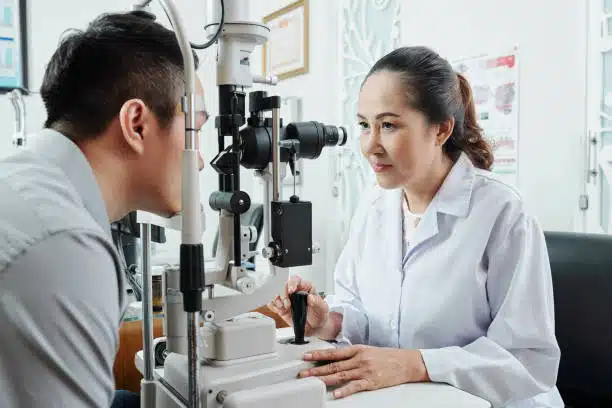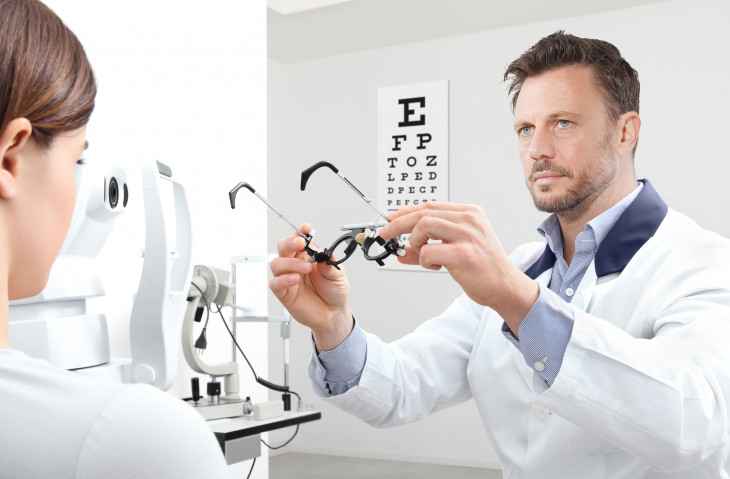Discover a Trusted Optometrist Chino for Household Eye Care Solutions
Discover a Trusted Optometrist Chino for Household Eye Care Solutions
Blog Article
Discovering the most up to date Technical Developments in Optometry and What They Mean for Optometrists
From the precision of Optical Coherence Tomography to the nuanced insights supplied by AI-driven analysis tools, these innovations are setting new criteria in client evaluation and treatment. As these developments permeate the method, optometrists are faced with the obstacle of embracing these devices to boost individual outcomes.
Developments in Diagnostic Equipment
Progressing the area of optometry, advancements in diagnostic devices have actually reinvented the way eye treatment experts examine and identify ocular problems and aesthetic problems. The previous decade has witnessed significant technical advancements, enabling more extensive and accurate evaluations.
An additional key technology is the intro of advanced corneal topography systems, which map the surface curvature of the cornea with accuracy. These tools are particularly useful for suitable get in touch with lenses and identifying corneal conditions. Electronic retinal imaging has changed conventional ophthalmoscopy, providing in-depth, scenic sights of the retina that facilitate thorough aesthetic exams.
The development of wavefront aberrometry has also been crucial, making it possible for the analysis of refractive errors with unrivaled accuracy (Optometrist Chino). This modern technology helps in tailoring corrective lenses and improving medical outcomes for refractive surgeries. Jointly, these diagnostic improvements equip eye doctors to supply exceptional patient treatment, ensuring very early treatment and tailored therapy approaches, inevitably enhancing visual health and wellness results
AI in Individual Administration
Building on the foundation of innovative diagnostic devices, the consolidation of artificial intelligence (AI) in patient administration stands for a transformative jump for optometry. AI systems are significantly utilized to enhance efficiency, accuracy, and customization in client care.
Furthermore, AI-driven systems help with streamlined individual interactions and administrative procedures. Automated organizing, virtual consultations, and personalized follow-up strategies not only boost client satisfaction however also optimize time administration for experts. These systems can triage individuals based upon the seriousness of their problems, making certain that those in crucial need get prompt focus.
In addition, AI improves decision-making by providing eye doctors with evidence-based recommendations and therapy pathways. By incorporating information from digital wellness documents, AI tools provide understandings that educate medical decisions, lowering the danger of errors and improving client outcomes. As AI remains to develop, its duty in individual administration will likely increase, improving the landscape of optometric treatment.
Advances in Retinal Imaging
In the realm of optometry, retinal imaging has actually witnessed exceptional technical improvements that are boosting diagnostic capabilities and individual treatment. Developments such as Optical Coherence Tomography (OCT) and fundus photography have changed how eye doctors analyze the retina and picture. OCT, in certain, gives high-resolution, cross-sectional pictures of the retina, permitting the thorough exam of its layers. This capability is important for very early discovery and management of conditions like glaucoma, diabetic retinopathy, and age-related macular degeneration.
Boosted imaging modalities like OCT angiography are more refining analysis precision. This non-invasive method maps blood flow in the retina, using important insights into vascular health without the demand for color shots. Additionally, flexible optics innovation is being incorporated into retinal imaging systems to fix ocular aberrations, providing unprecedented photo clearness. Such improvements help with the identification of minute retinal adjustments that could signify illness development.
Additionally, developments in synthetic intelligence are increasing retinal imaging by making it possible for automatic evaluation of big datasets. These systems aid optometrists in recognizing patterns a measure of pathology, consequently boosting analysis accuracy and performance. Collectively, these developments are changing retinal imaging into a i loved this foundation of contemporary eye care, enhancing outcomes and increasing therapeutic opportunities.
Teleoptometry's Expanding Role
Teleoptometry is increasingly coming to be a crucial part of eye care, driven by advancements in data and analysis devices. As optometry welcomes digital transformation, teleoptometry helps with remote appointments, enabling optometrists to expand their solutions beyond traditional boundaries. This is specifically helpful in country and underserved locations where accessibility to specialized eye care is commonly minimal. By leveraging high-resolution video clip conferencing and advanced retinal imaging, optometrists can carry out thorough eye exams from afar, ensuring prompt medical diagnosis and therapy.
The integration of synthetic intelligence (AI) further enhances teleoptometry, making it possible for the evaluation of visual data and aiding in the discovery of eye conditions such as glaucoma and diabetic person retinopathy. AI-powered formulas can quickly translate complex imaging information, supplying eye doctors with beneficial insights that boost professional decision-making.
Additionally, teleoptometry supports continuity of care through smooth combination with electronic wellness records (EHRs), enabling eye doctors to preserve detailed individual backgrounds. When consulting with different practitioners., this ensures that people get customized and constant care also.
Despite these benefits, difficulties stay, consisting of guaranteeing information safety and handling person expectations. Teleoptometry stands for a significant stride towards more accessible, effective, and patient-centered eye care. As technology develops, its duty is positioned to broaden better.

Future Trends in Eye Treatment
A myriad of cutting-edge trends is established to improve the future of eye care, driven by technological innovations and the developing needs of patients. One considerable pattern is the combination of expert system (AI) in diagnostics, which assures to boost the accuracy and effectiveness of eye evaluations. AI formulas can assess substantial amounts of data from retinal images, potentially spotting problems like diabetic retinopathy and glaucoma earlier than traditional approaches.
Moreover, customized medication is obtaining traction in optometry, with hereditary screening notifying customized therapy strategies. This technique intends to enhance individual results by customizing interventions to private hereditary profiles. Wearable technology, such as wise call lenses, is also coming up, using real-time tracking of intraocular stress or sugar degrees, therefore giving constant understandings right into eye and systemic health.
The fostering of augmented truth (AR) and digital fact (VR) in training and person education and learning is another additional info arising pattern. These technologies provide immersive experiences that can boost understanding and abilities both for patients and eye doctors. As these patterns advance, optometrists need to stay abreast of technical improvements to provide advanced treatment, ensuring enhanced client outcomes and contentment in the vibrant landscape of eye care.
Final Thought

Jointly, these diagnostic improvements empower eye doctors to deliver premium patient treatment, making sure very early intervention and tailored therapy approaches, eventually boosting visual wellness outcomes.

As these modern technologies proceed to evolve, eye doctors need to adjust and incorporate them right into technique, eventually enhancing process effectiveness and click reference boosting the requirement of eye treatment provided to clients.
Report this page